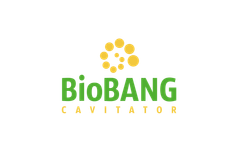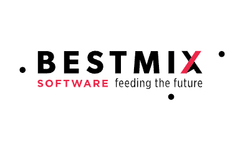Agrifood Industry Articles & Analysis
26 articles found
The project has as its overall aim to increase climate resilient agricultural productivity and food security, with a specific objective to increase the water productivity and profitability of smallholder farmers in Mozambique, prioritizing small (family sector) farmers to increase food and nutritional security. This project will demonstrate what the best combinations are of adoption strategies ...
Pâtes Warda is a subsidiary of the Rose Blanche Group, one of Tunisia’s leading agrifood organisations, involved in the selection, transformation, and marketing of wheat and its derivatives, as well as animal food products. The group operates across 17 production sites and has 33 subsidiaries, employing a workforce of 4,000 employees. Clarke Energy has provided a total of 15MWe to ...
There is an ever-increasing need for real time and onsite detection for risk related substances (e.g. pesticides, bacteria and antibiotics) and authenticity in agrifood products. Food quality, food frauds and food scandals are becoming a major issue these days. When it comes to authenticity of food, it allows consumers to get the actual value (what they pay for) and increases their overall level ...
Farmers have been growing food for generations without using farm management software. But in today’s fast-paced and highly competitive food production landscape, farm management software, or FMS, is critical to success.Why Use Farm Management Software? A farm management software program implemented in an agricultural operation leads to reduced expenses, increased yields, better yield quality, ...
ByAGRIVI
At the 2021 Cool Farm Alliance Annual General Meeting, Hal Hamilton, Co-Founder at the Sustainable Food Lab, moderated a thought-provoking session on “Enabling change – leverage points to scale regenerative agriculture and GHG emission reductions” with leading stakeholders from the agri-food industry and members of the Cool Farm Alliance: Luc Beerens, Global Sustainable ...
Plant’s power: 150 Nm3/h Daily Feeding: 27 t cow manure, 14 t sewage sludge, 8 t agrofood industry wastes, 5 t crops, 3 t cereal dust Goal: increase the gas production and improve the viscosity To see video, please click ...
With more people getting information online, Leanna Sweha from AgStart has just published an article about the role social media plays to educate people about technologies to make our agrifood system more productive, efficient, sustainable and secure. They focused on how WaterBit is a good example of this. The article is titled, “Capitalizing on a New Public Awareness of Food ...
ByFarm(x)
Fiona Turner, Co-Founder & CEO of agtech start-up Bitwise Agronomy, talks about her vision for agriculture, opportunity, and tech in Tasmania and how the Farmers2Founders Bootcamp is helping her achieve this Bitwise Agronomy is an innovative agtech company that aims to give time back to farmers and viticulturists. The company's newly-launched GreenView application allows vineyard owners to ...
Approximately a year ago, I entered the plant phenotyping arena and in my first blog for our company posed the following ...
This customer is a leading global integrated supply chain manager and processor of agricultural products and food ingredients, supplying various products across 16 platforms in 65 countries. It owns the largest flour food processing plants in Nigeria. We provide EPC integrated solutions for them since 2012, and manage operation and maintenance of 11*1200kW gas generators and 3*500kW gas ...
Nutritional supply chains present companies with a unique set of challenges. Volatile raw material prices combine with the logistical difficulties of handling bulk materials and other complications to raise the risk of expensive errors. To avoid these pitfalls while realizing savings and efficiencies, companies need enterprise resource planning (ERP) solutions tailored to their specific needs. ...
ByBESTMIX
Agricultural waste biomass generated from agricultural production and food processing industry are abundant, such as durian peel, mango peel, corn straw, rice bran, corn shell, potato peel and many more. Due to low commercial value, these wastes are disposed in landfill, which if not managed properly may cause environmental problems. Currently, environmental laws and regulations pertaining to ...
This paper aims to present a framework of trade relations between Italy and the countries of southern and eastern shores of the Mediterranean Sea. More specifically, using the indicators proposed in the analysis of international trade, we want to analyse the intensity of trade in agri–food products and the strength of trade ties between the bordering Mediterranean countries. The analysis of the ...
While water on a global scale is plentiful, 97% of it is saline and 2.25% is trapped in glaciers and ice, leaving only 0.75% available in freshwater aquifers, rivers and lakes. About 70% of this fresh water is used for agricultural production, 22% for industrial purposes and 8% for domestic purposes. Increasing competition for water for domestic and industrial purposes is likely to reduce the ...
What is the best way to protect vulnerable rural communities from the damaging impacts of climate change? Insurance could be an answer, but it raises a number of difficult questions. To illustrate, the New York Times recently ran a story, “Report Says a Crop Subsidy Cap Could Save Millions.” The piece discusses a new U.S. Government Accountability Office (GAO) report that ...
New conceptualisations of peri-urban zones are needed to trigger a deeper understanding within professionals and practitioners of appropriate intervention strategies that build the resilience of sustainable agriculture and food production within peri-urban communities. This paper posits a theoretical construction of the peri-urban zone, derived from applying a biomimicry framework. Biomimicry is ...
This paper looks into the potential impacts of the proposed Economic Partnership Agreement (EPA) between African, Caribbean and Pacific countries and the European Union (EU) on agriculture and food production in Nigeria. Using a partial equilibrium analysis, it assesses possible changes in production arising from the implementation of a Common External Tariff (CET) and/or EPA on three crops ...
In this paper, the different approaches given in literature on the requirements of a successful traceability support system are reviewed, and the factors that influence the effectiveness of traceability in the agrifood sector are identified. Moreover, the objectives of such system were determined as well as its individual operations, the needs and the attitude of ...
Environmental valuation "multi-stakeholder" processes, as advocated by ecological economics, often have a strong local character. Critical Natural Capital cannot be defined without referring to a given geographical scale, very often local in terms of the definition of the environmental resource at stake and the relevant stakeholders involved in the evaluation and decision process. In this ...
The scavengers and decomposers in ecosystems are presented as metaphors for agricultural and food industry systems' sustainability. These organisms of ecosystems can both take in wastes from other organisms as well as produce materials for them to use. We argue that the metaphor is beneficial for considering the physical flows of matter and energy in economic systems as it can yield models with ...













